Samsung Galaxy A55 review: metal makes the difference
Flagship style with a mid-range twist
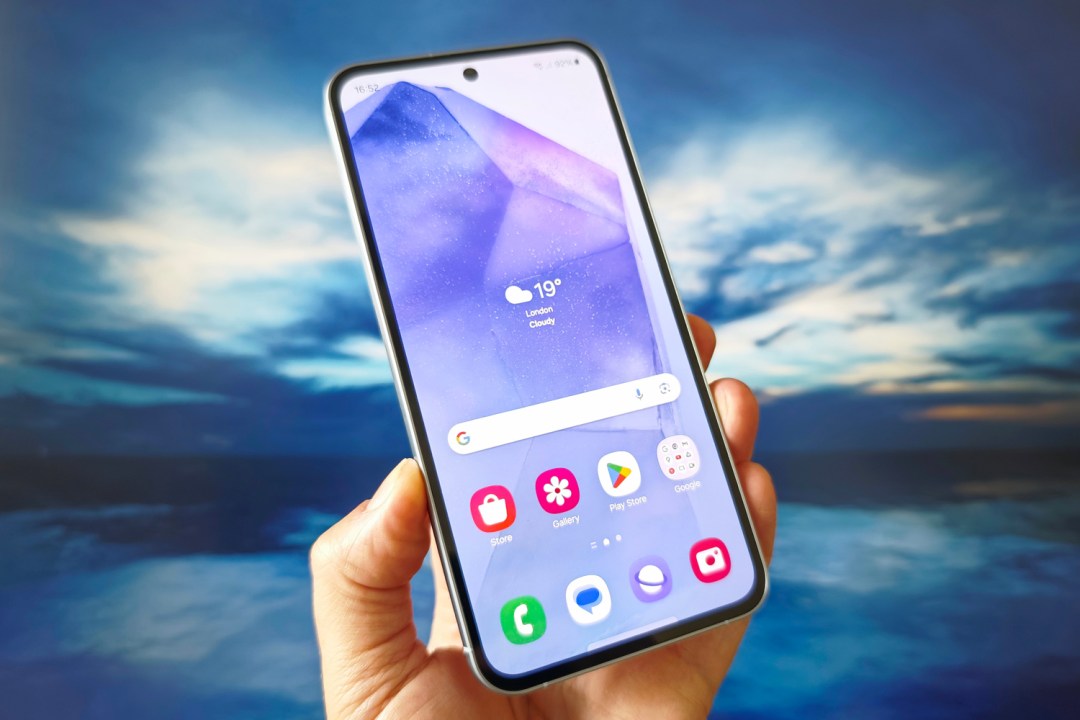
Stuff Verdict
Samsung die-hards will appreciate the S24-influenced styling and familiar photo processing; everyone else will find similar performance elsewhere for less cash than the Galaxy A55.
Pros
- Materials and build quality on par with pricier phones
- Decent performance and respectable battery life
- Capable cameras for stills and video
Cons
- Screen bezels are a bit bulky
- Tries to tempt you with bloatware on initial setup
- Similarly fast and long-lasting rivals cost considerably less
Introduction
The Galaxy A-series can usually be relied on for lustworthy looks and the same software experience seen on Samsung’s top-tier models. They might not always have the hardware to rival the very best mid-range smartphones, but that never stopped them from outselling the flagship in many countries. The Galaxy A55 looks to continue that trend.
This big-screen handset makes the move to a metal frame, to better match the top-end Galaxy S24. It also packs in a more powerful CPU than its predecessor, along with three rear cameras, a sizeable OLED screen and the latest flavour of Samsung’s OneUI interface. As mid-rangers go, it’s very well equipped.
However, at £439/€480 (Samsung isn’t bringing it to the US), it lands in hotly contested territory. Several rivals match it on spec for less cash, and the cheaper, plastic-framed Galaxy A35 isn’t all that different as far as internals go. Is there a ‘Samsung tax’ in effect here – or can the A55 exist outside the S24’s shadow?
How we test smartphones
Every phone reviewed on Stuff is used as our main device throughout the testing process. We use industry standard benchmarks and tests, as well as our own years of experience, to judge general performance, battery life, display, sound and camera image quality. Manufacturers have no visibility on reviews before they appear online, and we never accept payment to feature products.
Find out more about how we test and rate products.
Design & build: brush with brilliance
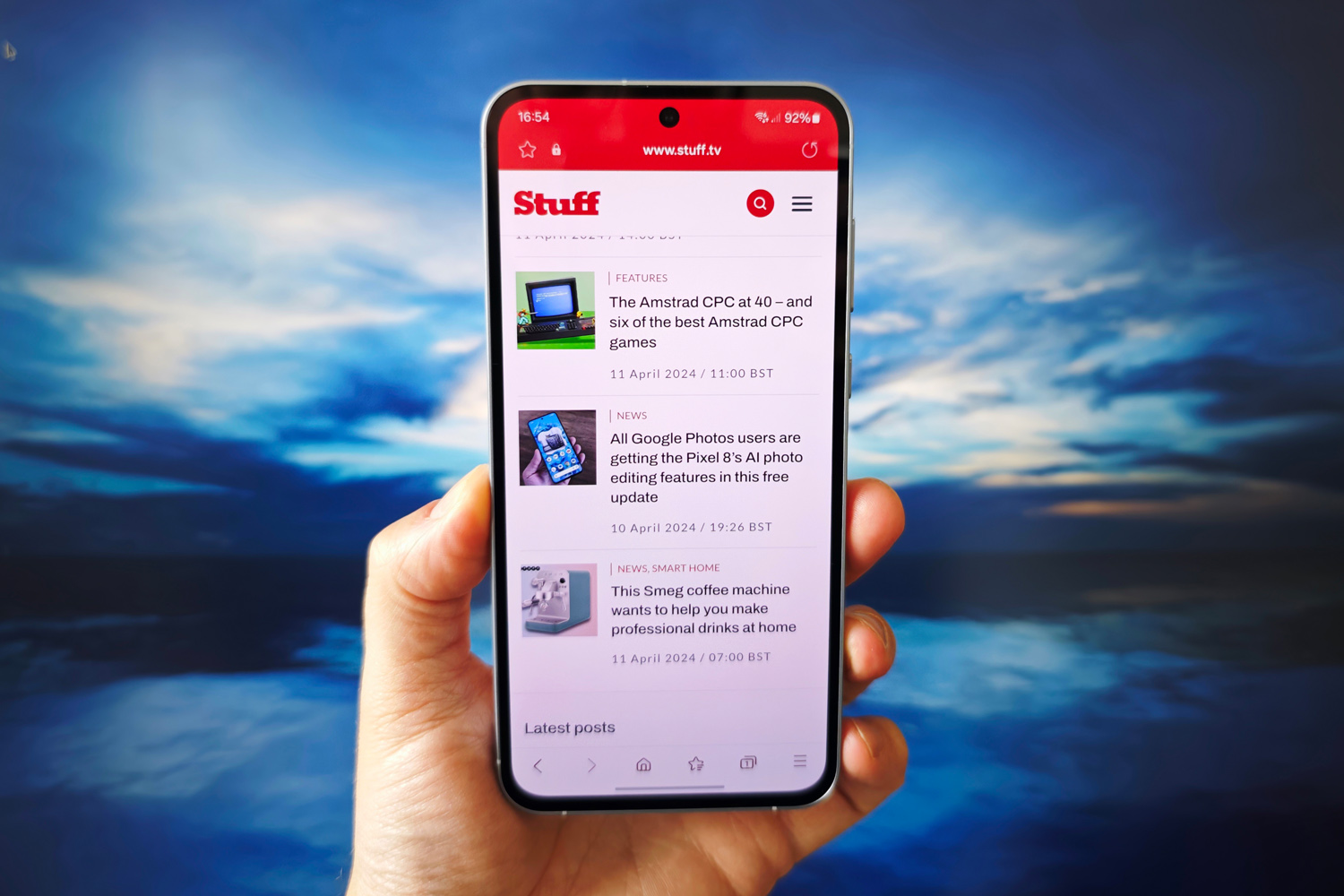
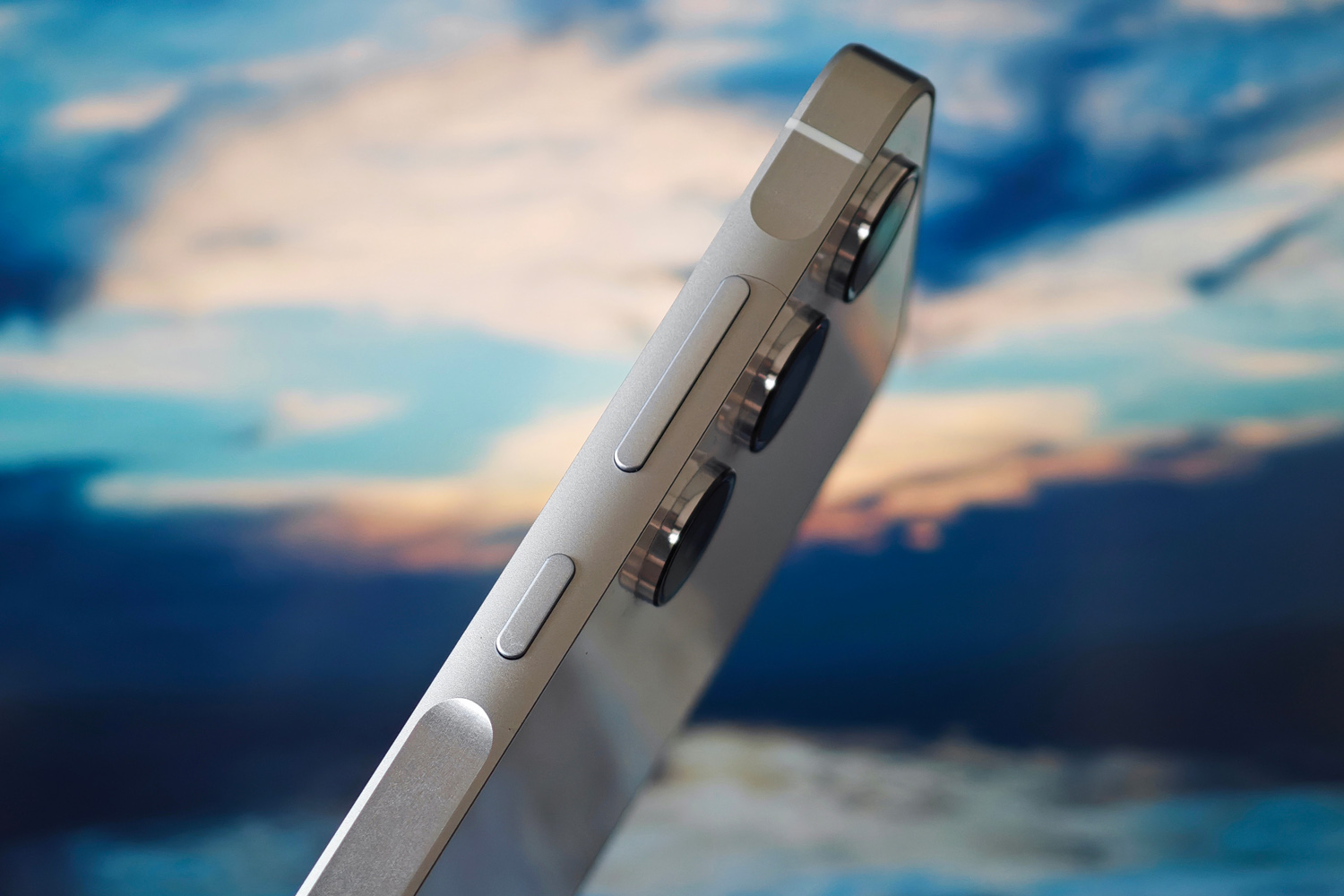
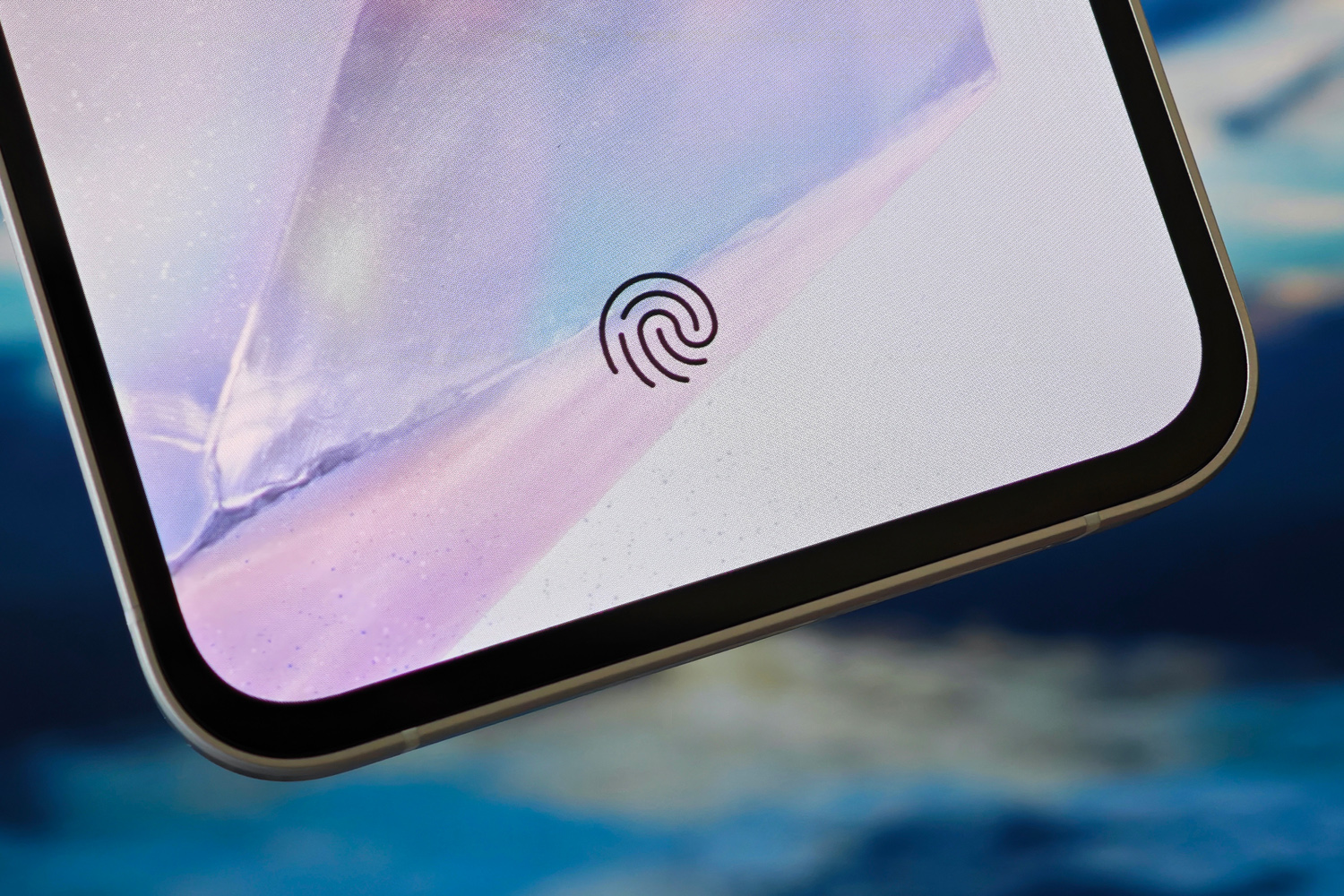
Unless you know the subtle signs to look out for, you’ll have a hard time telling the Galaxy A55 apart from the much pricier Galaxy S24+. Both are metal wedges with flat screens, rounded corners and very similar styling, so there’s no question this mid-ranger does an excellent impression of a full-on flagship.
The A55’s brushed aluminium has a more ‘machined’ appearance than the S24’s smoother finish, and protrudes out slightly around the power and volume button. The three camera lenses have different trim around each lens, and the rear panel has a glossy treatment instead of satin-style glass. It’s not as effective at hiding fingerprint smudges, though how well they show up depends on which colour you go for: my Awesome Iceblue review unit looked a little grubby after a day or two, but I expect the lighter Awesome Lemon to do a better job.
Naturally the S24+ is slimmer than the A55, given its more premium status. More surprising is that it’s also shorter and narrower, despite having a larger screen. That’s a big clue as to how thick the Galaxy A55’s display bezels are. It’s still a perfectly pocket-friendly phone, though, with a decent amount of heft.
IP67 dust and water resistance is very nice to see: most mid-rangers make do with IP54, so this phone will have no trouble surviving more prolonged dunkings. I used it while caught in a rain shower to no ill effect.
An under-display fingerprint sensor is pretty much a given at this price. It’s not too close to the phone’s bottom edge, so was always easy to reach, but I wasn’t blown away by its responsiveness. I felt it took a half-second longer to bypass the lock screen than some of the affordable alternatives I’ve used recently. Face unlock is also onboard, but can’t be used to validate banking apps.
Screen & sound: HDR hero


The Galaxy A55’s AMOLED screen has had a growth spurt from the previous generation, climbing from 6.4in on the Galaxy A54 to 6.6in here. Resolution stays the same at 2400×1080, but text and images still looked perfectly crisp despite a lower pixel density. The 120Hz refresh rate is now adaptive, dipping to 60Hz for static screens to save a bit of power. It was quick enough to respond to swipes and scrolls I never felt the need to force 120Hz on all the time.
Gorilla Glass Victus+ protection is a boon; most rivals make do with older versions of Corning’s toughened glass, which aren’t as resistant to accidental scrapes or drops. Samsung doesn’t fit a screen protector from the factory like many mid-range rivals do, but it stayed scratch-free throughout my testing. There’s no question those bezels look rather chunky, though. The curved-edge Redmi Note 13 Pro+ and flat Nothing Phone 2a both do a better job.
Contrast and colour vibrancy are up to Samsung’s usual excellent standard, with colour accuracy seeing a slight improvement this time around. Brightness is about the same, being enough to cope pretty well outdoors in sunshine. It can’t claim to be a class leader when rivals can hit 1400 nits, but a 1000 nit average in High Brightness Mode (HBM) meant I didn’t have to rush for shade every time a message came in while I was outside.
I can’t fault the Galaxy A55’s speakers, which pump out clear and surprisingly well-rounded audio for a phone. Higher frequencies are a little peaky when you really crank the volume, but the small amount of low-end adds more substance to videos and music than I was expecting.
Cameras: familiar trio
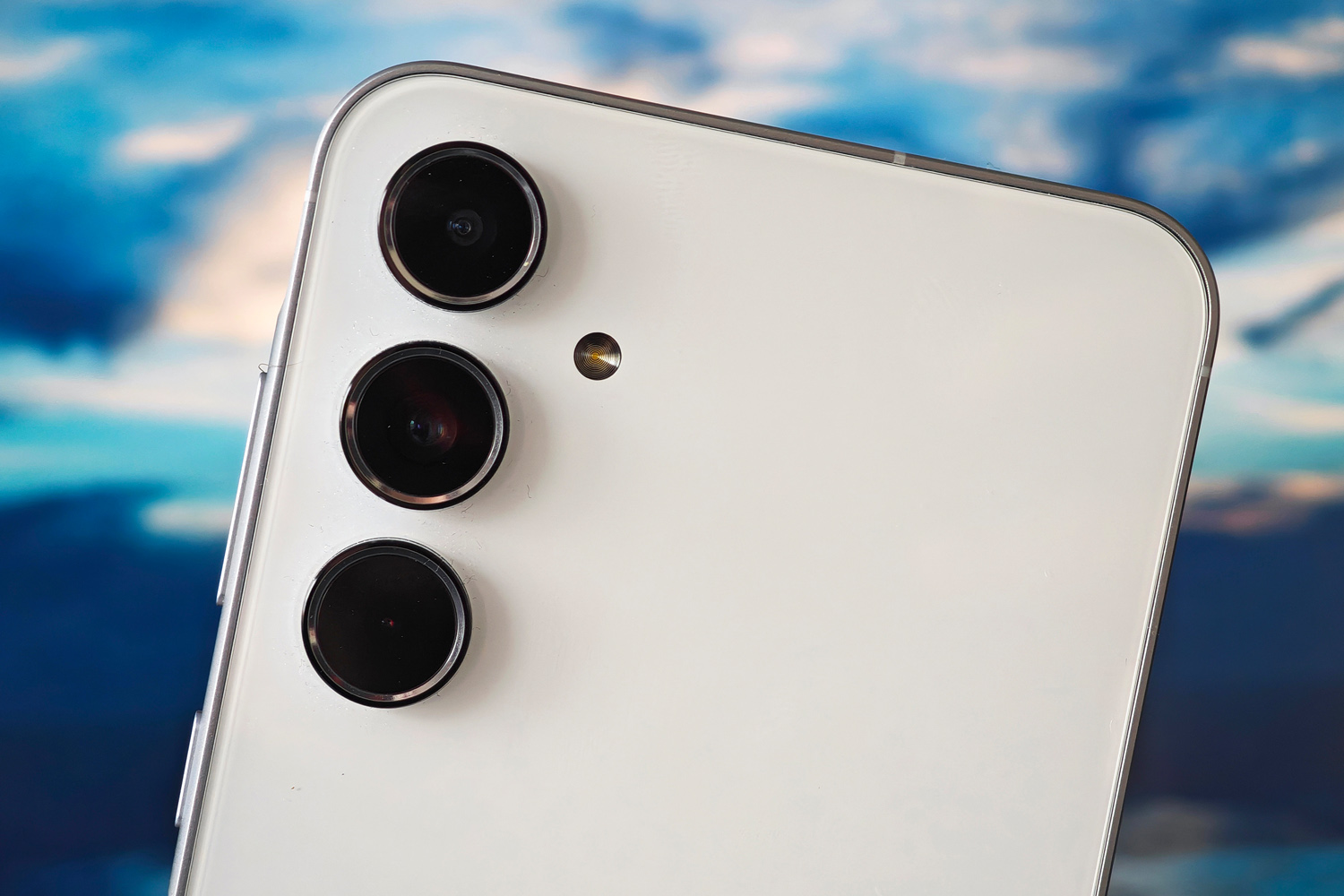
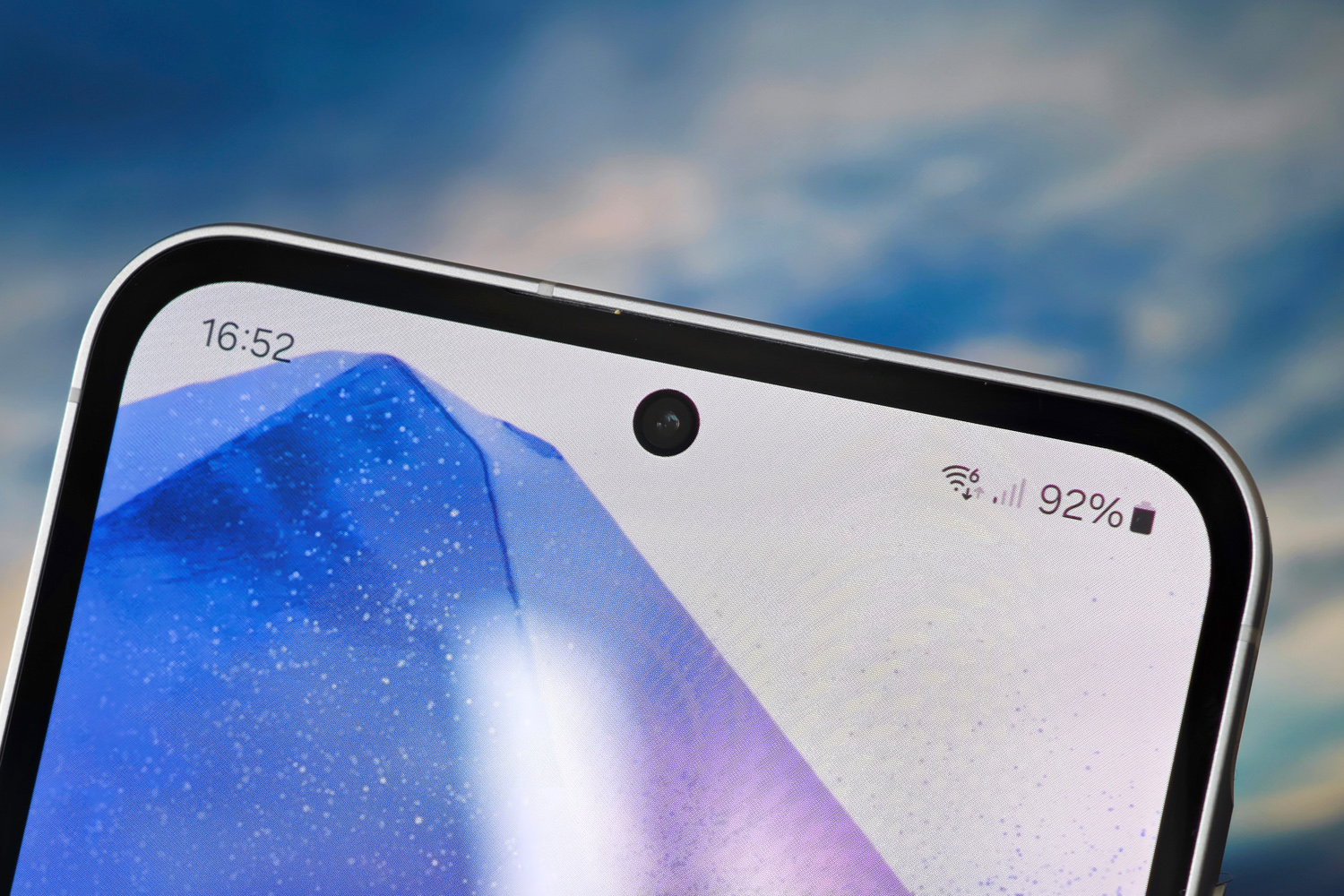
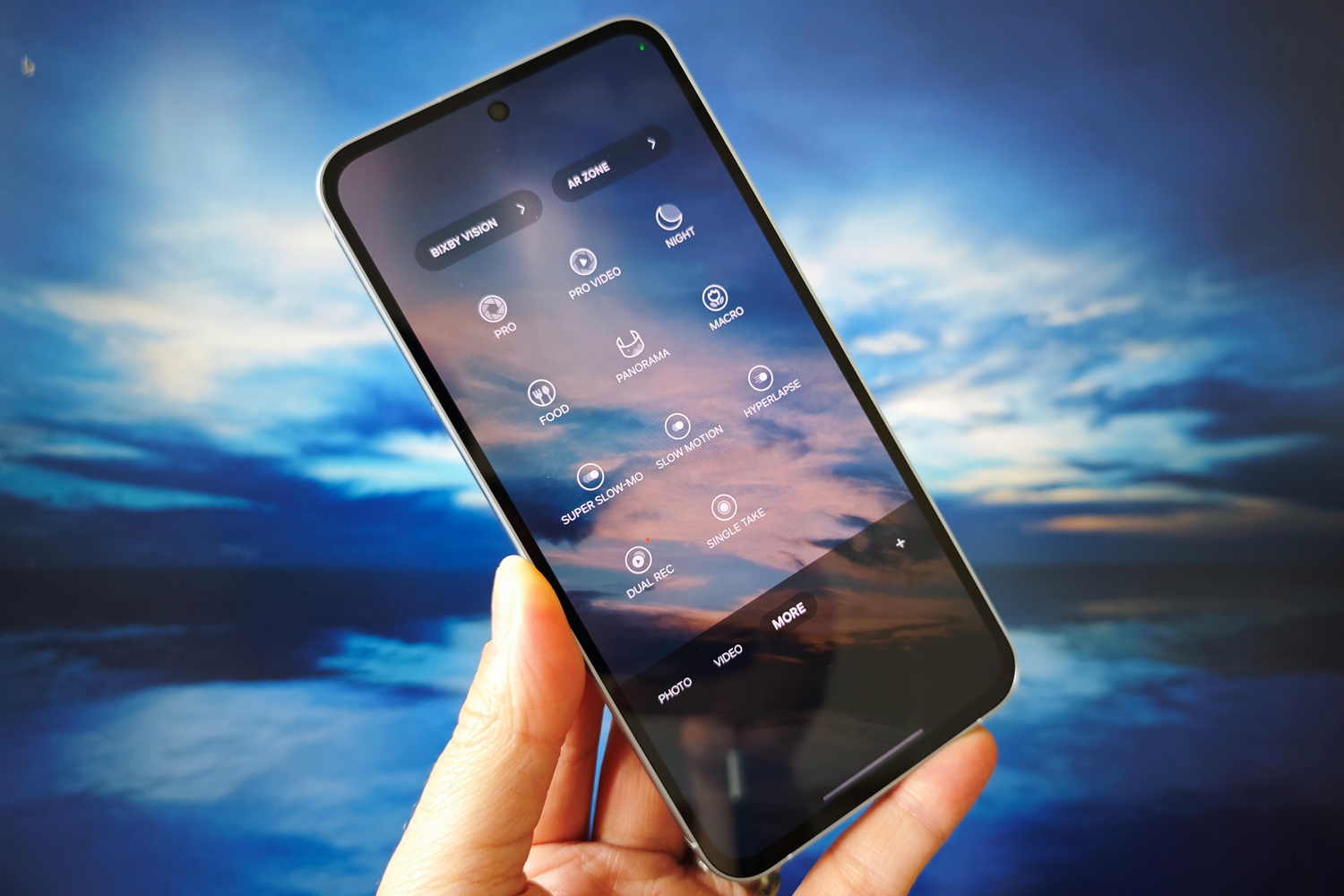
The Galaxy A55 doesn’t mix things up on the camera front, sticking with the same rear trio as the last-gen Galaxy A54. That means a 50MP main snapper with optical image stabilisation, a 12MP ultrawide and a 5MP macro snapper bringing up the rear.
Close-ups do have an edge over affordable phones that make do with 2MP sensors, but quality is still a long way short of the other two lenses so I rarely felt the need to use it. I think it’s a shame Samsung didn’t go with a dedicated zoom lens instead. That said, the main camera still has the pixel count to do justice to 2x shots – they’re just not quite as clean as what you’ll get from a Google Pixel 7a.


Image quality has taken a welcome step forward from the previous generation. It looks like Samsung has dialled up the sharpening a little, giving the impression of extra detail without stepping into crunchiness and artefacting. Colours are a little more nuanced and lifelike, too, while still retaining the signature punchiness Galaxy fans love. Exposure and dynamic range are on point, both outside and indoors. Overall results are decent for the cash, but the Galaxy A55 won’t worry phones from the class above.










The ultrawide lens does a better job when there’s lots of light, with more noise and softer details once you step inside. It’s no worse than any mid-range rival, though. It could be closer to the main camera for colour consistency and exposure, but it’s still a welcome addition.


Night mode is quick to kick in once the sun sets, and helps the Galaxy A55 take very respectable low-light shots. Colour is largely true to life, sharpness is on point and there’s a good amount of detail on show. That’s true for 2x zoom shots as well. Forcing Night mode off results in softer looking images, so I always made sure to keep it enabled.
Software experience: One to watch
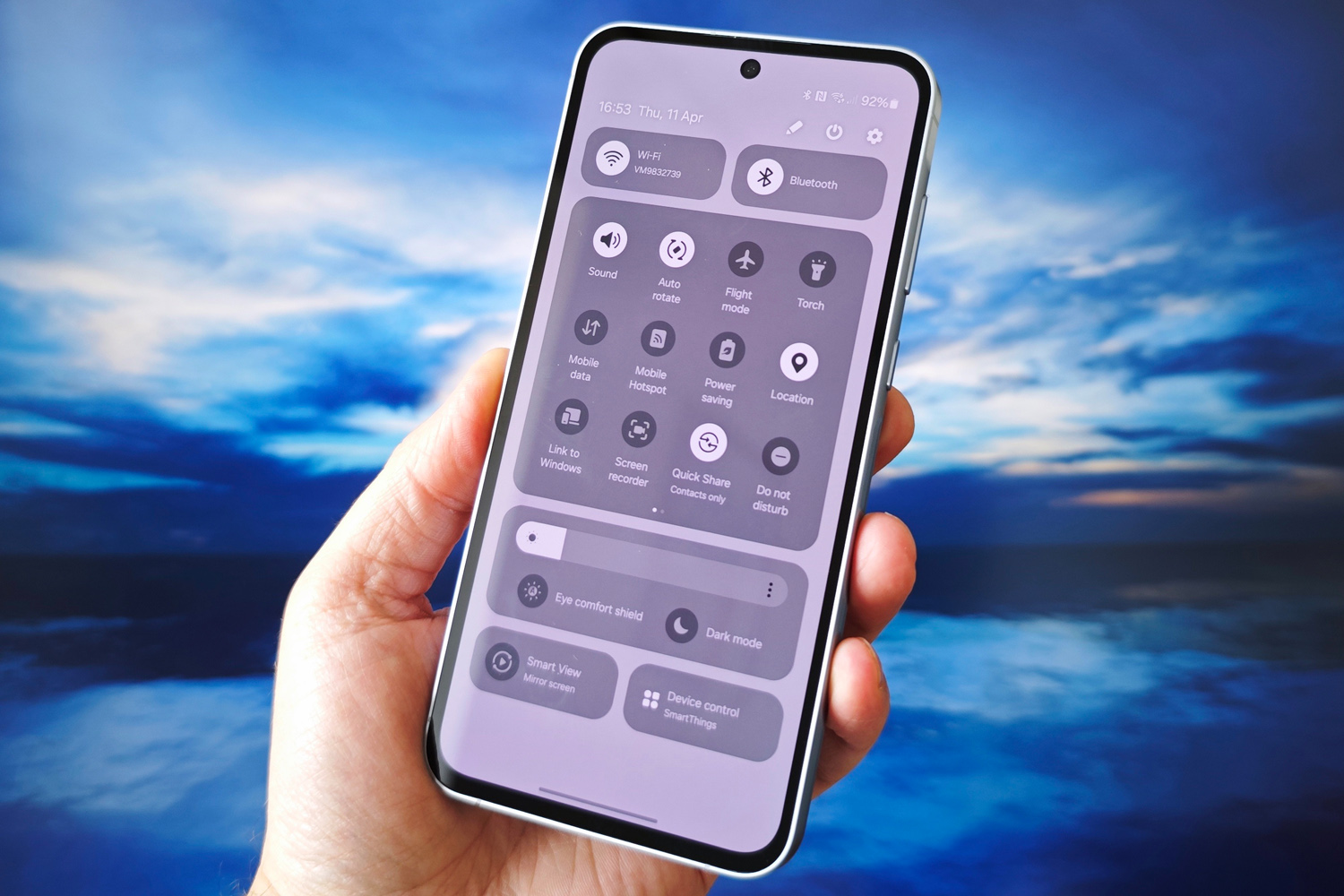
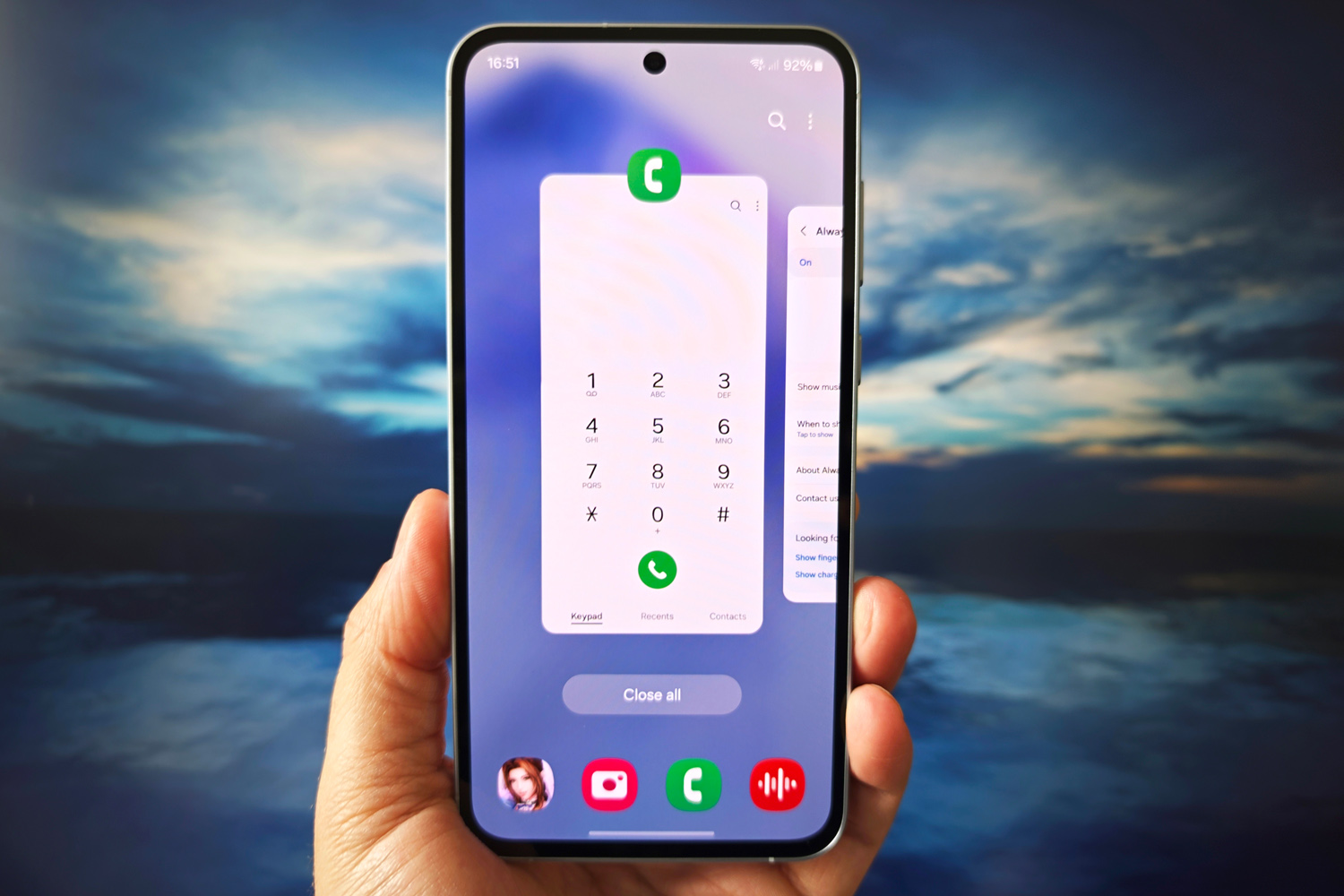
The Galaxy A55 lands with OneUI 6.1, which sits on top of Android 14. It’s not the full-fat experience you’ll get on a Galaxy S24, with pretty much all of Samsung’s Galaxy AI features stripped out, and Circle to Search not making the cut. Otherwise it looks and feels identical, with the same extensive selection of own-brand apps alongside Google’s own.
Samsung newcomers might be overwhelmed (Galaxy Wallet and Google Wallet, Samsung Store and the Google Play Store, Samsung Internet and Google Chrome) but this won’t come as a surprise to anyone familiar with previous Galaxy phones. I was also a little disappointed to see Samsung trying to foist bloatware onto you during the initial setup. You can untick the suggestions, but it’s something I’d only expect from a much smaller brand.
This is the first A-series phone to get Samsung’s Knox Vault, a hardware security suite meant to keep your data protected. It’s largely behind-the-scenes, so is more for peace of mind than something you’ll actively use. Previously you’d have to step up to a Galaxy S series phone, so it’s great to see Samsung bringing it to a wider audience.
I also give Samsung a thumbs up for its four years of promised OS updates and five years of security patches. That’s comfortably a year or two more than most affordable phones deliver right now, if not quite on the same level as Google or Apple’s entry-level models.
Performance & battery life: made for mid-range

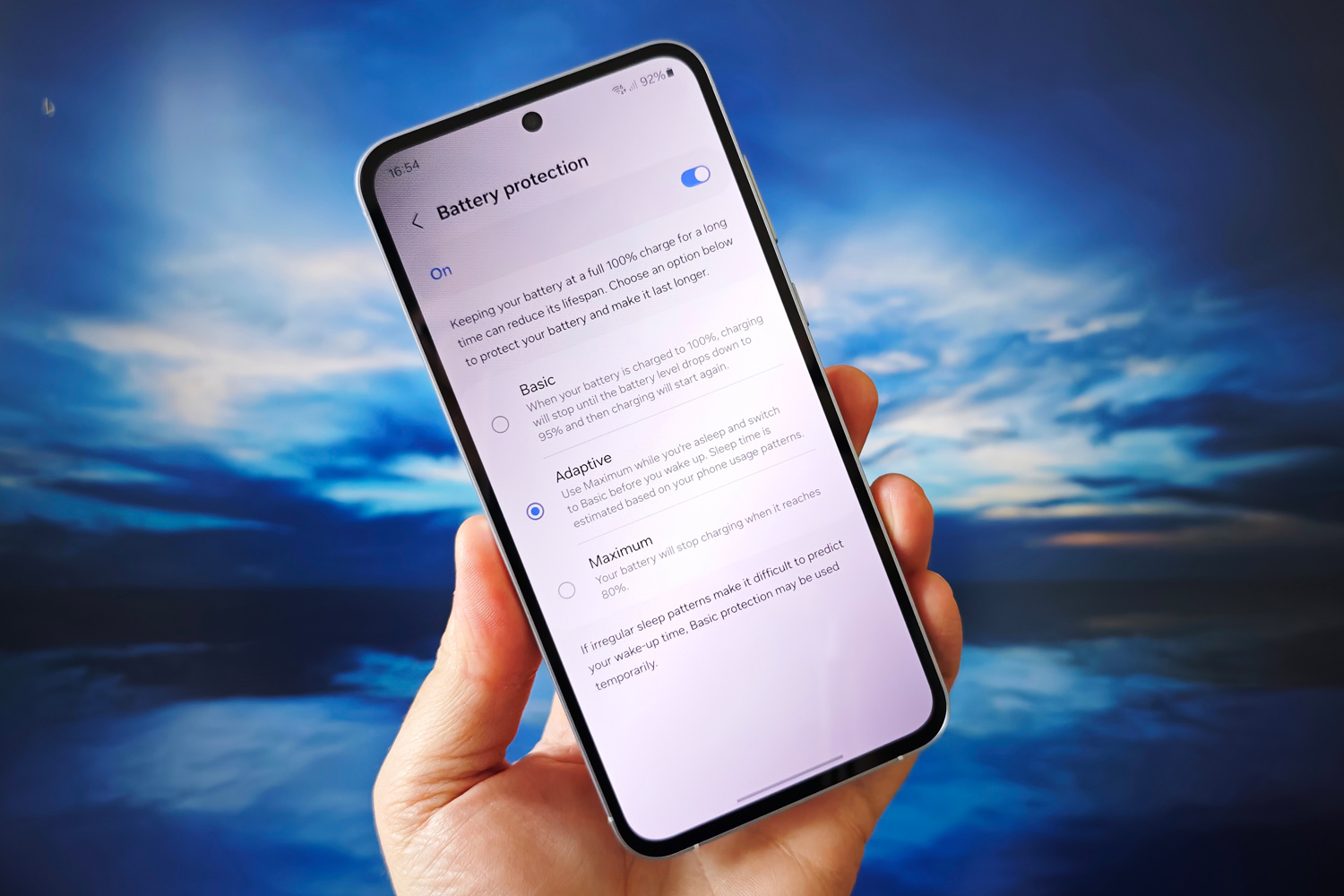
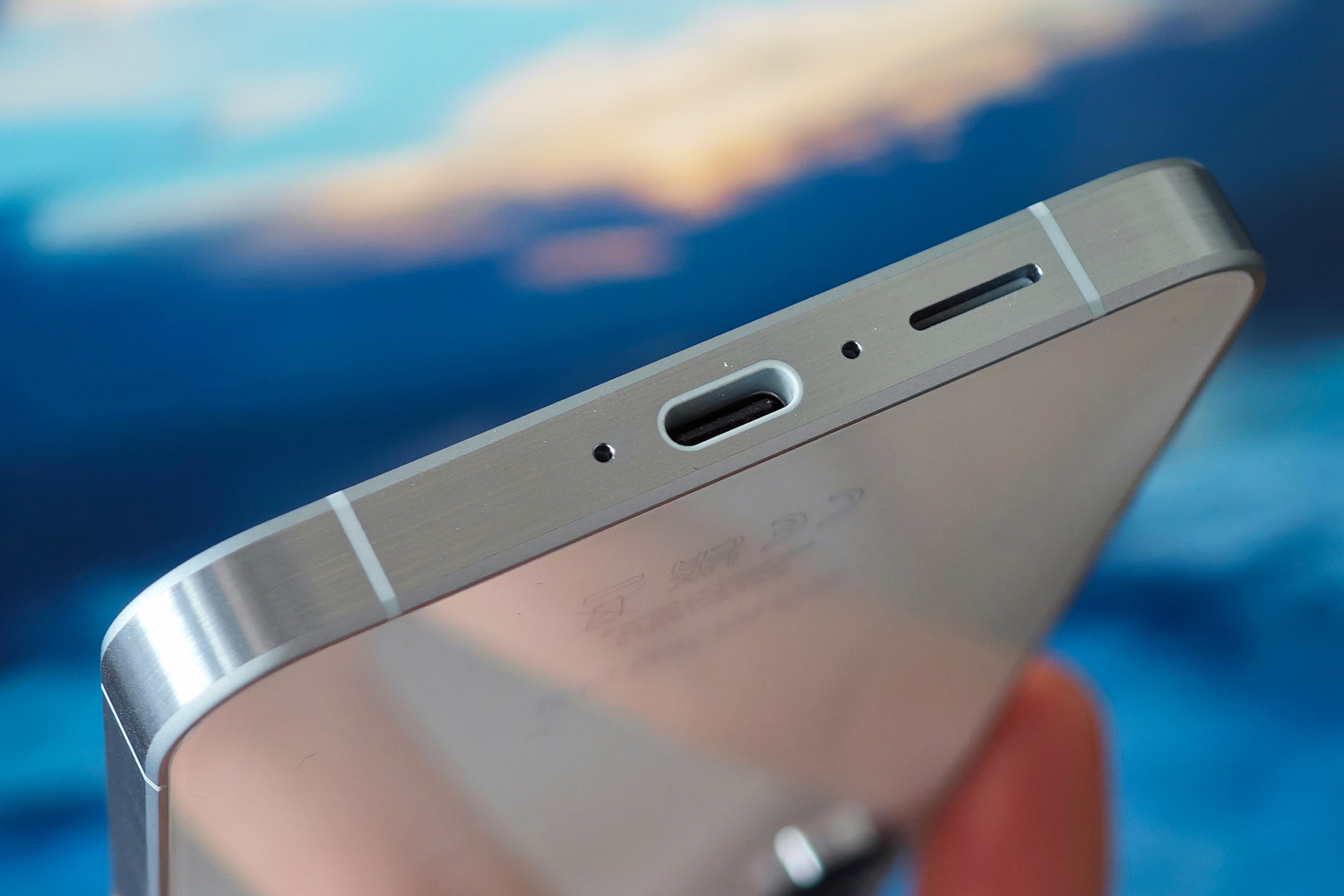
The Exynos 1480 chipset at the heart of the Galaxy A55 is a healthy amount faster than the 1390 CPU used on the outgoing A54; this eight-core silicon adds AMD-developed graphics and is made using a more efficient 4nm process. Paired with 8GB of RAM, that translates to perfectly potent performance in most apps, even if benchmarks show a wide gap between it and Dimensity 8200-powered mid-rangers such as the Vivo V30 Pro. The Galaxy S23 FE maintains a sizeable lead, whether you get one with an Exynos 2200 or Snapdragon 8 Gen 1 chip.
This isn’t the best choice for gamers looking to save a buck, with the Nothing Phone 2a coming out on top in 3DMark. I was able to play 3D games at medium details without any noticeable slowdown, but 120Hz play is asking a bit too much of the hardware – and Call of Duty Warzone Mobile looked particularly smudgy and low-poly on default settings. I can’t fault Samsung’s thermal management, though; performance stayed consistent even after several hours of play, with the phone never getting overly hot to the touch.
I was expecting all-day battery life from the Galaxy A55’s sizeable 5000mAh battery, even with an Exynos CPU running the show. Samsung’s chips aren’t renowned for their energy efficiency, but this new version was able to eke an extra hour of video playback compared to the previous-gen Galaxy A54. For typical use, I only needed to plug in once in the morning; as long as I steered clear of demanding games, it would then last through until the next day. That’s fairly standard for this price bracket, although the Nothing Phone 2a can go even longer between top-ups.
25W wired charging is rather tortoise-like in 2024, when many affordable phones can manage 67W or faster. It’s still enough to get the Galaxy A55 from empty to around 45% in half an hour, but you’re looking at an hour and a half for a complete refuel. That’s assuming you have a 25W power brick, of course; Samsung doesn’t include one in the box. There’s no wireless charging, either.
Samsung Galaxy A55 verdict
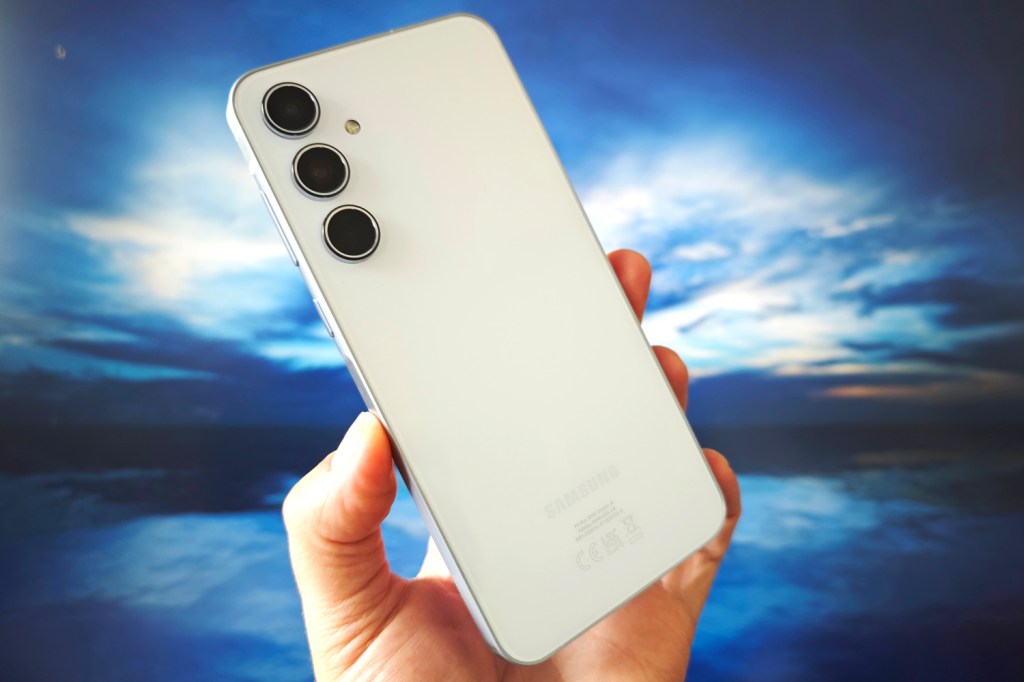
The Galaxy A-series remains Samsung’s most popular phone line in certain parts of the world, so I can understand why the firm played it safe for the Galaxy A55. It’ll feel instantly familiar to owners of older Galaxy handsets, with some nice-to-haves that let it rub shoulders with more expensive rivals. The metal frame was a treat for the fingertips every time I took the phone out of my pocket. IP67 resistance is always reassuring, and it has very respectable long-term software support for a mid-ranger.
This is still a modest update over last year’s effort, though. It didn’t blow me away on performance, battery life or camera quality, which were merely on par with the more wallet-friendly competition. A Nothing 2a might be plastic fantastic, but it’s just as nippy and takes an equally pleasing picture, while costing £100 less. And if a plastic frame isn’t a dealbreaker for you, the Galaxy A35 offers 90% of the experience for 75% of the outlay.
Once mobile carriers start offering juicy contract deals, though, or the SIM-free price dips a bit? Then the Galaxy A55 will be very easy to recommend to Samsung fans.
Stuff Says…
Samsung die-hards will appreciate the S24-influenced styling and familiar photo processing; everyone else will find similar performance elsewhere for less cash.
Pros
Materials and build quality on par with pricier phones
Decent performance and respectable battery life
Capable cameras for stills and video
Cons
Screen bezels are a bit bulky
Tries to tempt you with bloatware on initial setup
Similarly fast and long-lasting rivals cost considerably less
Samsung Galaxy A55 technical specifications
| Screen | 6.6in, 2340×1080 AMOLED w/ 120Hz |
| CPU | Samsung Exynos 1480 octa-core |
| Memory | 8/12GB RAM |
| Cameras | 50MP, f/1.8 w/ PDAF, OIS + 12MP, f/2.2 ultrawide + 5MP, f/2.4 macro rear 32MP, f2.2 front |
| Storage | 128/256GB on-board, microSD expansion |
| Operating system | Android 14 w/ OneUI |
| Battery | 5000mAh w/ 25W wired charging |
| Dimensions | 161x77x8.2mm, 213g |

